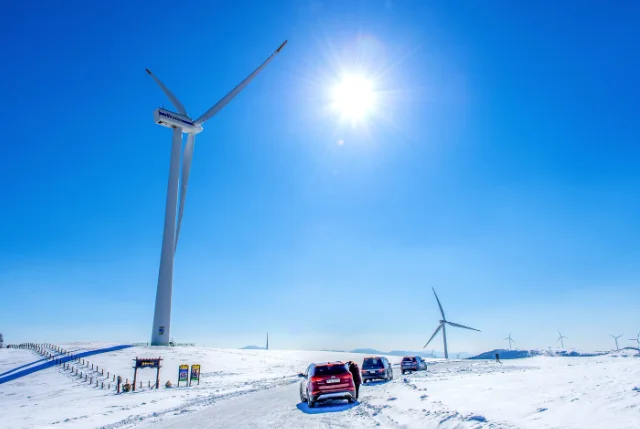For homeowners and businesses in areas with cold winters and heavy snowfall, one pressing question emerges each season: Is snow removal necessary for solar panels? Having snow accumulate on photovoltaic surfaces can significantly reduce efficiency and power output, but removal efforts also carry risks. In this article, we’ll examine how snow affects solar generation, best practices for snow removal, and how integrating a solar system with energy storage can mitigate the drawbacks of snow cover.
How Snow Impacts Solar Panel Performance
Snow on panels acts as a barrier, blocking sunlight and reducing, or even completely stopping, electricity production. Some of the ways snow impacts panel output include:
- Light blockage: Even a thin layer can block enough sunlight to drop production drastically.
- Reflection and albedo effects: Bright snow around panels can reflect light, but covered panels cannot harness that benefit.
- Physical load and snow weight: Heavy snow loads pose structural risks to panels and mounts.
In cold climate locations, mountainous regions, high latitudes, or places with frequent snowfall, these performance losses can last for hours or days until snow melts or is removed.
Risks of Removing Snow Improperly
While removing snow can restore output, careless methods can damage your solar installation. Common risks include:
- Scratching or damaging panel glass with abrasive tools
- Loosening mount bolt connections or panel frames
- Breaking sealants or compromising water-tight junction boxes
- Safety hazards: falling snow, ice, or slip‐and‐fall accidents
Because flexible timing and safety are essential, many homeowners are unsure if snow removal is worth the cost and effort.
Best Practices for Safe and Effective Snow Removal
Here are recommended ways to remove snow without risking damage:
- Use soft tools only: Long, soft-bristle brooms or brushes that are non-abrasive; avoid metal scrapers.
- Work from the bottom up: Push snow downward rather than lifting it off, to avoid stressing the upper frame.
- Wait for sun and warmth (if practical): Solar radiation and ambient temperature help melt snow naturally; use removal only when necessary.
- Wear proper safety gear: Non-slip boots, gloves, and ensure roof access is safe.
- Protect seals and wiring: Avoid walking directly on panels; keep weight off fragile components.
Role of Energy Storage System in Snowy Conditions
One way to reduce the urgency of manual snow removal is to pair your solar panels with a robust energy storage system. Here’s how this helps:
- Supply during downtime: When snow blocks sunlight, stored energy can power your loads, reducing reliance on the grid or backup generator.
- Smooths production dips: Storage picks up the slack overnight and during snow cover, maintaining consistent electricity.
- Allows smarter scheduling: If you know snow is coming, you can conserve energy, recharge batteries ahead, or run essential loads during sunny hours.
This pairing can increase overall reliability in cold climates, although it doesn’t replace the benefits of keeping panels snow‐free where possible.
Considering Installation Design to Reduce Snow Issues
Preventing snow accumulation, through design, is often preferable to frequent removal. Some design strategies include:
- Steeper tilt angles: Panels tilted steeply allow snow to slide off naturally.
- Minimal obstructions upstream: Avoid roof features or objects that block wind or shade, which might cause snow to gather.
- Use of anti‐snow coatings or hydrophobic glass was offered.
- Durable framing and mounting hardware rated for snow loads.
Thinking ahead also means planning for snow removal access safely if needed.
Is Snow Removal Worth It?
To decide if snow removal makes sense, evaluate:
- Cost of manual labor or service vs. expected gain in electricity production
- Frequency and duration of snow cover (hours of lost production)
- Risks and potential damage costs (roofing, panels)
- Value of electricity or savings in your area
In many places, solar production losses from snow may be modest and offset by natural melting, making aggressive removal unnecessary. But in areas where snow persists longer, the revenue or savings regained may justify safe removal efforts.
Additional Weather and Maintenance Considerations
Besides snow, other cold-weather challenges affect solar systems:
- Ice accumulation around frames or under panels, which can warp or stress mounts
- Thermal contraction/expansion that stresses seals and connectors
- Windborne debris carried by winter storms abrading panel surfaces
Routine inspection, especially after heavy snowfall, helps identify damage early. Checking panel output, mount integrity, wiring, and weatherproofing ensures system longevity.
Choosing the Right Solar System for Snowy Regions
When investing in solar in a region with frequent snow, here are features to look for:
- Panels rated for high snow load and cold temperatures
- Glass with scratch resistance and hydrophobic coatings
- Frames with strong structural design supporting snow/wind loads
- Tilted mounting systems or adjustable racks
- Good warranties covering snow damage
A well-designed solar system tailored for snowy climates will reduce maintenance burdens and deliver better performance year-round.
To Conclude
So, is snow removal necessary for solar panels? The short answer: sometimes yes depending on your climate, roof design, panel tilt, and local snow behavior. For many people, strategic, safe removal combined with design choices and energy storage will maximize output without undue risk.
If you live in a cold region, investing in panels and mounting designed for snow, pairing with storage, and planning for occasional safe removal can protect your solar output and your investment. Regular monitoring and a thoughtful approach will keep your system operating well even through cold winters.










 /home/u448362301/domains/theexpotab.com/public_html/wp-content/themes/foxiz/templates/popup.php on line 167
/home/u448362301/domains/theexpotab.com/public_html/wp-content/themes/foxiz/templates/popup.php on line 167